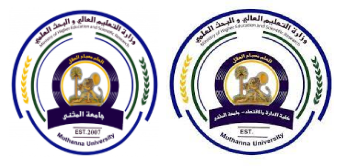تقييم المخاطر العملياتية لمحطة كهرباء الموصل الغازية باعتماد نموذج تحليل نمط الفشل وتأثيراته(FMEA)
- Post by: Muthanna mjdes
- سبتمبر 20, 2021
- Comments off
[vc_row][vc_column][vc_column_text]
الملخص
يسعى البحث الى التطرق الى ابرز النماذج في تشخيص وتقييم المخاطر ممثلة بنموذج تحليل نمط الفشل واثاره Failure Mode And Effect Analysis (FMEA) الذي يُعد اسلوب كفوء لزيادة الموثوقية والسلامة من خلال التخلص من انماط الفشل الممكنة الحدوث وتقييم خطورة هذه الانماط وترتيبها حسب درجة خطورتها ومن ثم اتخاذ الاجراءات التصحيحية التي تؤدي الى التخلص منها كونها تشكل خطر كبير على عمل المنظمات، ويهدف البحث الى تطوير منهجية جيدة لتقييم المخاطر المكونة لنموذج FMEA من خلال تحديد المخاطر الحرجة التي تؤثر على عمل محطة الموصل الغازية وترتيبها حسب درجة خطورتها ومحاولة ايجاد التفسيرات المنطقية لها وطرق علاجها من خلال استخدام قائمة فحص تم اعدادها لتضم انماط الفشل وفق نموذج FMEA وحساب رقم اولوية المخاطرRisk Priority Number (RPN) بضرب ثلاثة عوامل الخطر وهي الشدة Severity (S) واحتمال الحدوث Occurrence (O) واحتمال الكشف Detection (D) لكل من اوضاع الفشل، واعتمادا على النتائج التي توصلت لها الباحثة والتي من ابرزها تقادم المحطة وضعف الامكانات المادية والتقنية ادت الى ضعف الابداع التكنولوجي والذي يُعد اكثر العوامل خطورة على المحطة واستمرار عملها. قدمت الباحثة العديد من المقترحات لعل ابرزها ضرورة توجه محطة كهرباء الموصل الغازية الى اعتماد التقانات الحديثة في العمل ورفد المحطة بوحدات ذات خصائص تكنولوجية عالية تحسن كفاءة العمل وتقلل الجهد والوقت المطلوب للعمل.
زهراء غازي ذنون الدباغ
جامعة الموصل / كلية الادارة والاقتصاد
Evaluate the Operational Risks of the Mosul gas power plant by Adopting Model Failure Mode And Effect Analysis (FMEA)
Zahraa Ghazi Thanoon Al-Dabbagh *a
University of Mosul / College of Administration and Economics.
Abstract
The research seeks to address the most prominent models in diagnosing and evaluating risks represented by the Failure Mode And Effect Analysis (FMEA) model, which is an efficient method to increase reliability and safety by eliminating possible failure patterns. It also aims at assessing the seriousness of these patterns and arranging them according to their degree of severity and taking corrective measures that lead to getting rid of them as they pose a great risk to the work of organizations. Moreover, the research aims to develop a good methodology to assess the risks that make up the FMEA model by identifying the critical risks that affect the work of the Mosul gas station and arranging them according to the degree of their severity and trying to find logical explanations and methods of treatment. By using a checklist prepared to include failure patterns according to the FMEA model and calculating the Risk Priority Number (RPN) by multiplying three risk factors: Severity (S), Occurrence (O) and Detection (D) for each of the failure modes. According to the findings of the researcher, there is a plant’s obsolescence and the weakness of the material and technical capabilities, led to the weakness of the technological innovation, which is the most important factor. The researcher presented many recommendations, perhaps the most prominent of which is the need for the Mosul gas power station to adopt modern technologies and to supply the station with units with high technological characteristics that improve work efficiency and reduce the effort and time required for work.
………تحميل الملف.……….[/vc_column_text][/vc_column][/vc_row]
